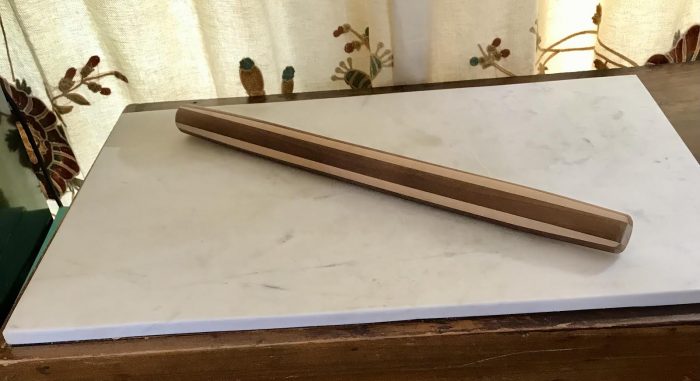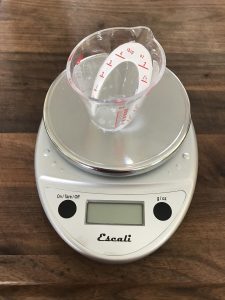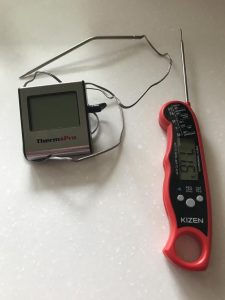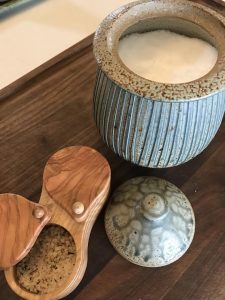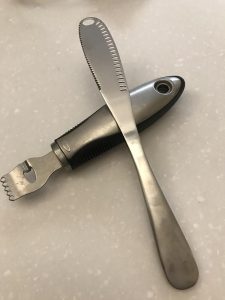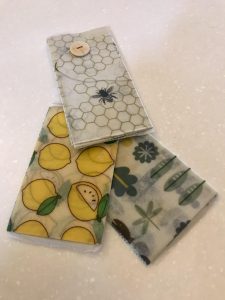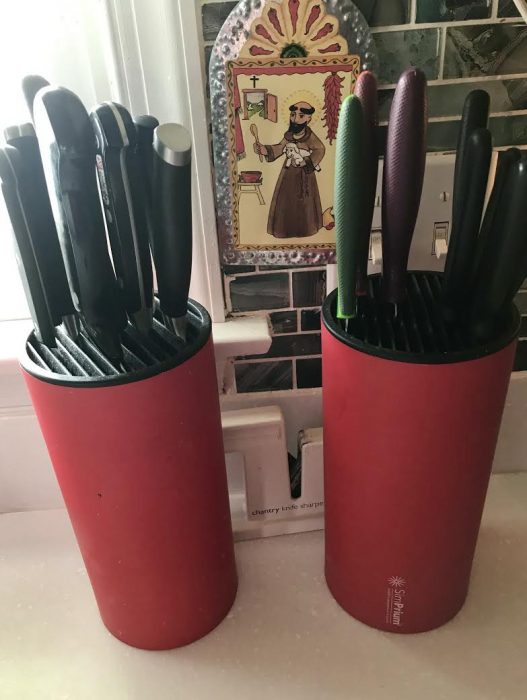Virtual Cooking Show: 2.1 Vegan Nachos | University of Arkansas - University of Arkansas Newswire |
- Virtual Cooking Show: 2.1 Vegan Nachos | University of Arkansas - University of Arkansas Newswire
- Island Cooking: Kitchen Gadgets - Island Free Press
- Slow burn: a fast guide to slow cooking - The Guardian
- Chefs Are Revealing Their #1 Most Useful Cooking Tip (And I'm Memorizing All Of Them) - BuzzFeed
- Florence Pugh’s Cooking Show Is Back for 24 Hours Only - Vulture
|
Virtual Cooking Show: 2.1 Vegan Nachos | University of Arkansas - University of Arkansas Newswire Posted: 22 Mar 2021 10:07 PM PDT March 23, 2021 Let's get cooking! In collaboration with the Full Circle Food Pantry and the campus dietician, University Programs is hosting a cooking show inspired by the power of plants! RSVP for your cooking kit on Hogsync. Kits will be available for pickup at Brough dining hall on March 23 and 24 during regular dining hours for those students who RSVP. The show will begin at 5 p.m., March 24, on Zoom, where we will walk through the steps to create "Chef's kiss" vegan nachos. The Zoom link will be sent to those who RSVP. During the Zoom meeting, we will also have a Kahoot! where the winner will take home cooking supplies, Snoop Dogg's Cookbook and merch from UP, the Volunteer Action Center and Food on the Hill. This event is sponsored by University Programs through the Office of Student Activities and is supported by the Student Activities Fee. For questions or for accommodations due to disability please contact the Office of Student Activities, osa@uark.edu or call 479-575-5255. University Programs is a program in the Division of Student Affairs. About the Division of Student Affairs: The Division of Student Affairs supports students in pursuing knowledge, earning a degree, finding meaningful careers, exploring diversity and connecting with the global community. We provide students housing, dining, health care resources and create innovative programs that educate and inspire. We enhance the University of Arkansas experience and help students succeed, one student at a time. |
|
Island Cooking: Kitchen Gadgets - Island Free Press Posted: 22 Mar 2021 05:34 AM PDT
|
|
Slow burn: a fast guide to slow cooking - The Guardian Posted: 22 Mar 2021 07:18 PM PDT Like any kitchen device, slow cookers have their quirks, advantages and pitfalls. When you know and understand what your slow cooker can and can't do, you can use it to wondrous effect. After cooking (a lot) with different cookers new and old, I can confirm that they vary in heat. Older cookers run cooler than their newer counterparts. So, while a vintage slow cooker might look good on your kitchen bench, it will take longer for the food to cook, change the final outcome and consistency of the dish, and it might also sit around the temperatures that you don't want: ones where bacteria and all the funky weird stuff can lurk and grow. You can buy a slow cooker for $20, but spend a little more if you can. Cheaper cookers have more variability in temperature. They are often more simplistic in construction, so they take longer to heat up and, when they do, the temperature is often too high for that nice low simmer you are looking for. They also take a lot longer to cool if you need to reduce the heat quickly or hold your food on the warm setting. If you can afford it, try for a cooker with numerous functions, most importantly, the sauté/sear function. This allows you to control the heat, and that pays dividends when you start and finish a dish in the one bowl. But if your slow cooker doesn't have a sauté function, don't panic. When recipes direct you to sauté in the bowl of the slow cooker, you can simply fry those elements in a pan and thoroughly scrape them into your slow cooker. Like an oven that has temperaments and hot spots, so too does your slow cooker. The more you use your slow cooker, the more you will understand how it behaves. The first few times you cook a recipe in your slow cooker, take note of how long it takes to actually cook compared with the suggested cooking time in the recipe. Note the liquid: was there too much or too little at the end of the specified time? If your cooker runs hot, you may need to reduce the cooking time, and vice versa. 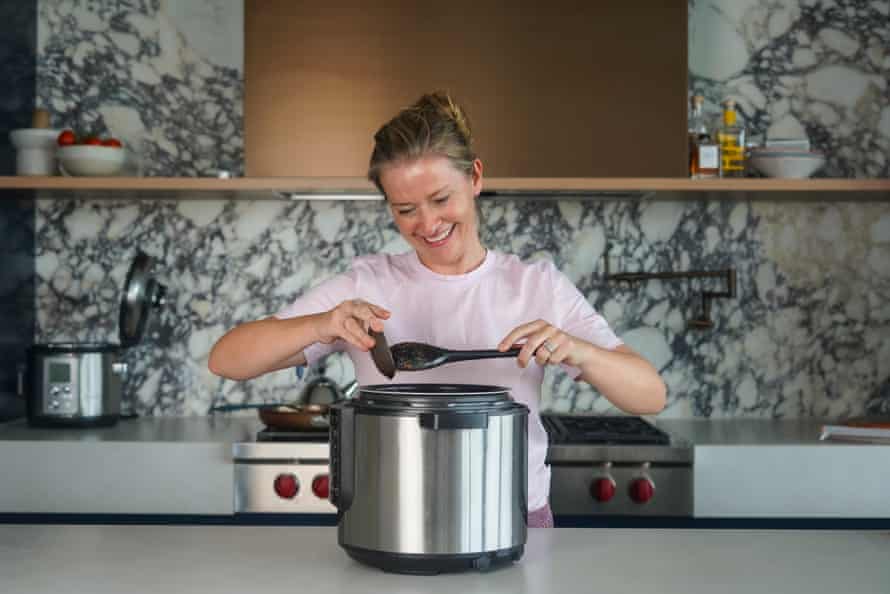 Flavour rulesThe adage of throwing everything in the pot and walking away is not your friend when it comes to flavour. Long, slow cooking mellows flavours and this, combined with the lack of evaporation, means that your food has the potential to be bland. Slow cooking works by building on a base flavour. The flavours in a dish need to be layered and then heightened by the use of strong spices, herbs and acid. There are a few golden rules to get maximum flavour out of your slow cooker. Always caramelise onions. It is important that you don't rush this step; onions need time to soften, lose their moisture and break down their fibres so they melt into the dish. Include freshly ground spices where possible, which tend to be stronger in flavour than the pre-ground versions, and always thoroughly cook a mirepoix (that's the carrot, celery and onion base). If you take an extra 10 minutes to cook down your aromatics, the finished dish will have a deeper flavour and a better texture. Heat your slow cooker before you start, always use a stock as your liquid base (rarely water) and make sure you sear meat until it has a nice caramelised crust. The last and crucial pitstop for flavour – herbs, nuts, acids, cooling yoghurts and creams, or mounds of cheese – are not simply garnishes to dress up your dish and add a final flourish, but bona fide components in their own right. Always taste for salt, sour, sweet, fresh and rich before you serve. Slow cooker convertYou can adapt so many recipes for your slow cooker. The two key things to keep in mind are liquid and time. When converting a recipe for the slow cooker, you will always need to reduce the amount of liquid specified and increase the cooking time. Not all recipes are going to work. Soups, braises, slow-cooked casseroles – these are your slow cooker friends. Slow cookers gradually come to temperature and then hold that temperature for however long you tell them to. On high, the cooker comes up to temperature quickly, whereas on low, it will heat more slowly. Which setting you use depends on the time available to cook the recipe, but I suggest embracing the slow option, as this gives the flavours a long and luxurious amount of time to meld and intensify. So, if the original cooking time was one hour, it should take approximately four hours on the high setting and no more than six hours on the low setting. Think pasta casseroles, quicker-style soups, chicken or seafood and veggie-loaded dishes. If the original cooking time was for more than an hour, you'll often find that it does well when cooked for eight hours on low. This is ideal for your meat braises and slower simmered stews, such as beef bourguignon or chilli. 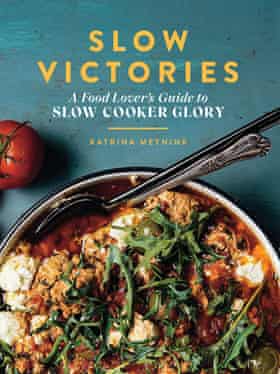 Slow cookers are little insulators, meaning a lot of liquid is created during the cooking process. You will need to take this into account when converting a recipe and reduce the amount of liquid you use, or risk having a runny mess with reduced flavour at the end. A good rule of thumb is to decrease the liquid (wine, stock, water) in a recipe by at least 125–250ml. Add your liquids slowly, and line your lid with a thin tea towel or paper towel to soak up the steam. Slow cooking is akin to spending too long in the sun at the beach. You might peer inside at the end and things look, well, ugly. But don't panic; when you cook for such long periods of time there are always separated fats, brown edges and weird lumps and bumps. Often I suggest removing portions and using a hand-held blender to give everything a quick whiz right there in the pot. All the bits will get reincorporated and the fats will emulsify, making it all thick and glossy. Which is exactly what you want. |
|
Posted: 21 Mar 2021 05:15 PM PDT 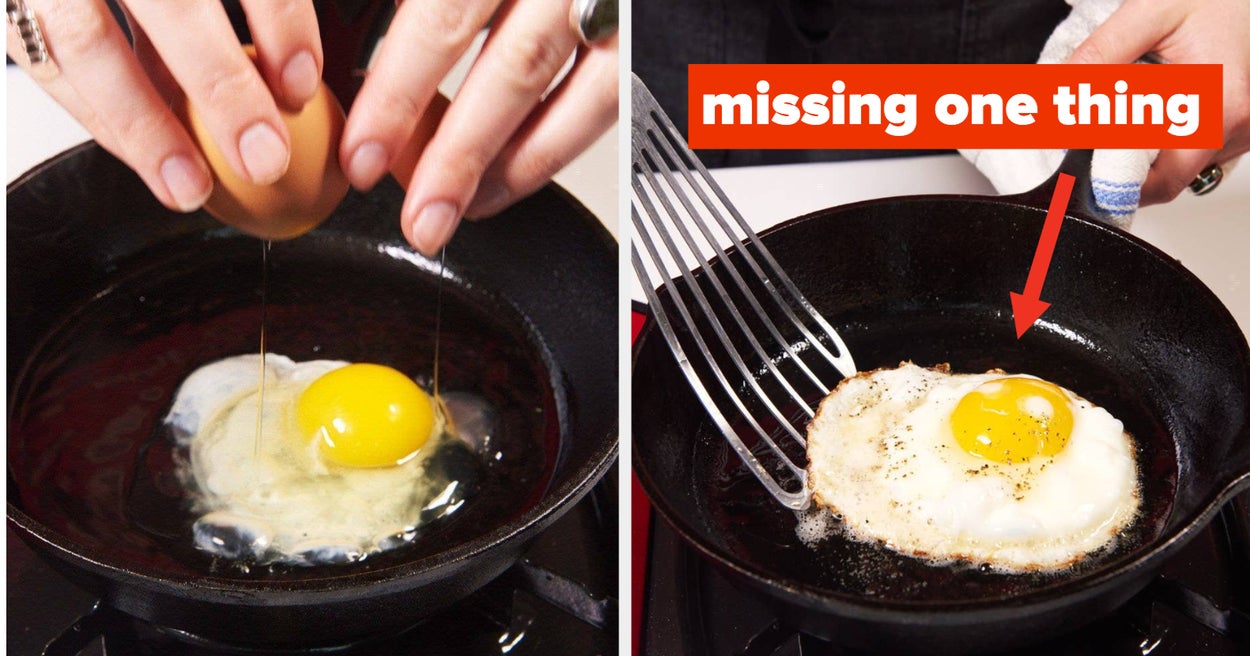 14. Don't over-flip your food while it's cooking."In general, just leave your food alone while it's cooking. Stirring and flipping it a lot might feel like you're doing something but you're only making it take longer. Just walk away and let it do its thing. For example, if your grilling or pan-frying a chicken breast, wait until it's half-way cooked before flipping it to the other side. Flipping it more than once slows the cooking process and you won't get that golden-brown coloring you're looking for. You'll also likely dry out the meat." —u/awwjeah "The best thing you can do for your meats is leave them alone. After you put it in the pan, on the grill, or whatever, DO NOT TOUCH IT. Do not poke, prob, press, squeeze, lift, turn, or anything else until it is time to flip it. Moving it will cause the juices to leak out and disrupt the cooking process, leaving your meat dry and flavorless." u/farsified |
|
Florence Pugh’s Cooking Show Is Back for 24 Hours Only - Vulture Posted: 22 Mar 2021 08:41 AM PDT  Host and chef extraordinaire, Florence Pugh. Photo: Bertrand Rindoff Petroff/Getty Images
Feast your eyes: Florence Pugh's Instagram Story cooking show, "Cooking With Flo" is back. Throwing together leftovers from her fridge, the Black Widow star uses her "instincts" to create a "bean-y, crunchy, salad-y kind of thing" with chickpeas and her iconic tzatziki. As always, the secret ingredient is her delightful personality. "If you have any other beans in your pantry, like for example, I have butter beans, I have navy beans, pop them in and make a bean salad," she advises. "That's what I'm going to do. So, it's just gonna be a bean-y fart — Bean-y fart? You will be farting by the end of this salad." See? Most recipes don't come with such a vital warning. Wearing a ruffly yellow apron embroidered with her name, Pugh puts a glam spin on homemaker chic. After dousing the salad in hot sauce, she dances with her bowl, as is tradition. We will be channeling the absolute joy Florence Pugh feels while eating leftovers for every meal going forward. Gobble up, swallow up "Cooking With Flo" on Instagram Stories now. |
| You are subscribed to email updates from "cooking" - Google News. To stop receiving these emails, you may unsubscribe now. |
Email delivery powered by Google |
| Google, 1600 Amphitheatre Parkway, Mountain View, CA 94043, United States | |
from What to Cook https://ift.tt/3rdW9Qr


